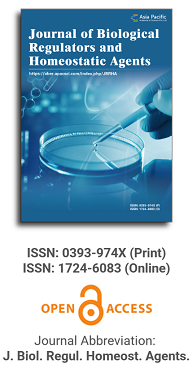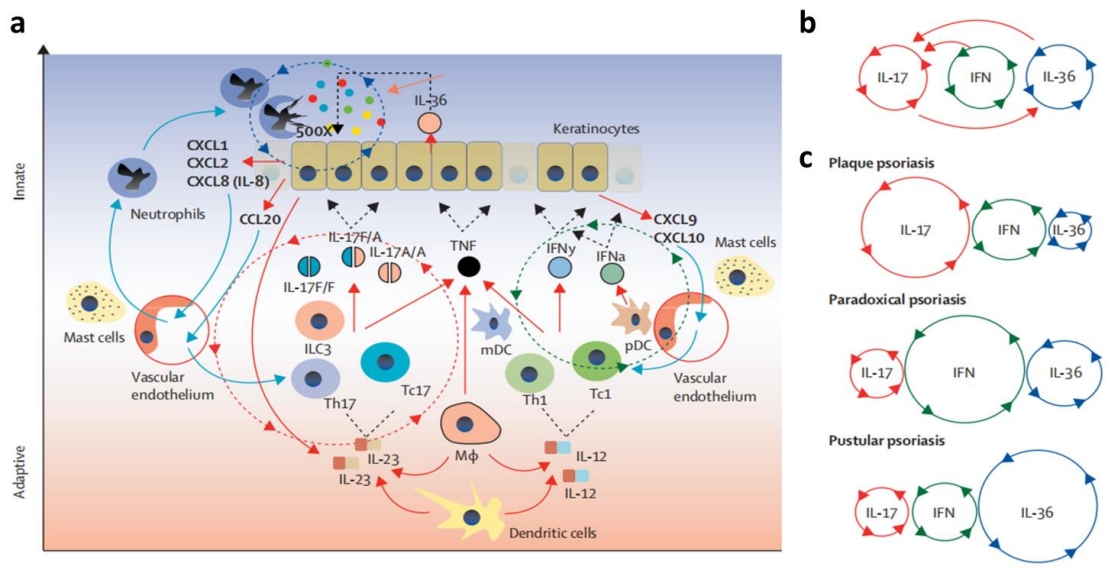
Asia Pacific Academy of Science Pte. Ltd. (APACSCI) specializes in international journal publishing. APACSCI adopts the open access publishing model and provides an important communication bridge for academic groups whose interest fields include engineering, technology, medicine, computer, mathematics, agriculture and forestry, and environment.

Bioregulatory mechanisms in ecological art research: A multidimensional analysis based on bibliometrics and machine learning predictions
Vol 39, Issue 2, 2025
Download PDF
Abstract
With the advancement of technology, human impact on the natural world has progressively intensified, leading to an increased frequency and expanded scope of environmental issues. Ecological art integrates natural and human environments, aiming to restore damaged ecosystems through artistic expression while reflecting artists’ understanding and concerns about nature. As an emerging interdisciplinary art form, ecological art has garnered significant attention; however, systematic research in this field remains insufficient. This study explores the role of bioregulatory mechanisms in ecological art, focusing on how biological materials and biochemical processes contribute to environmental health and sustainability. combining bibliometric analysis with machine learning techniques to examine ecological art literature indexed in the WOS Core Collection between 2004 and 2024, uncovering research trends, core themes, and future directions. In the bibliometric analysis, tools such as VOSviewer, CiteSpace, Bibliometrix, Pajek, and HistCite were utilized to systematically analyze co-occurrence networks, research hotspots, and their evolutionary pathways. For machine learning analysis, comparative experiments were conducted using Random Forest, Support Vector Machines (SVM), k-Nearest Neighbors (k-NN), Extreme Gradient Boosting (XGBoost), and LightGBM models. Ultimately, Random Forest was selected for predicting citation rates and interpreting influential factors. The findings indicate that machine learning techniques quantitatively reveal the centrality of “Ecological Design” and “Sustainability” as core themes in ecological art while highlighting the emergence of new topics such as “Urban Greenspace” and “Eco-Art Education” in recent years. The publication year was identified as the most critical factor influencing citation rates, followed by the number of authors and keywords. The first author’s affiliation country also significantly impacted citation performance. This study, through the integration of bibliometric and machine learning approaches, provides a novel methodological perspective for understanding the bioregulatory potential of ecological art, predicting academic influence, and guiding future scholarly and practical applications in environmental health and sustainability.
Keywords
References
1. Guy S, Henshaw V, Heidrich O. Climate change, adaptation and Eco-Art in Singapore. Journal of Environmental Planning and Management. 2013; 58(1): 39-54. doi: 10.1080/09640568.2013.839446
2. Tsevreni I. Encounters among Environmental Education and Eco‐Art in the Anthropocene. International Journal of Art & Design Education. 2022; 41(3): 482-495. doi: 10.1111/jade.12417
3. Brunner C, Nigro R, Raunig G. Post-Media Activism, Social Ecology and Eco-Art. Third Text. 2013; 27(1): 10-16. doi: 10.1080/09528822.2013.752200
4. Simon S. Systemic Educational Approaches to Environmental Issues: The Contribution of Ecological Art. Systemic Practice and Action Research. 2006; 19(2): 143-157. doi: 10.1007/s11213-006-9008-6
5. Song YIK. Community Participatory Ecological Art and Education. International Journal of Art & Design Education. 2009; 28(1): 4-13. doi: 10.1111/j.1476-8070.2009.01588.x
6. Cucuzzella C. Making the Invisible Visible: Eco-Art and Design against the Anthropocene. Sustainability. 2021; 13(7): 3747. doi: 10.3390/su13073747
7. Karsono K, Wibowo A, Suryadi R. Fostering environmental awareness through ecological art to enhance creativity in primary school students. Jurnal Fundadikdas (Fundamental Pendidikan Dasar). 2024;7(3):158-169.
8. Prášek P. In What Sense Can Art Be Ecological? Art as an Event Flash of Nature According to Henri Maldiney. Filozofia. 2024; 79(4): 442-456. doi: 10.31577/filozofia.2024.79.4.7
9. van Eck NJ, Waltman L. Software survey: VOSviewer, a computer program for bibliometric mapping. Scientometrics. 2009; 84(2): 523-538. doi: 10.1007/s11192-009-0146-3
10. Chen C. CiteSpace II: Detecting and visualizing emerging trends and transient patterns in scientific literature. Journal of the American Society for Information Science and Technology. 2005; 57(3): 359-377. doi: 10.1002/asi.20317
11. Chen C, Ibekwe‐SanJuan F, Hou J. The structure and dynamics of cocitation clusters: A multiple‐perspective cocitation analysis. Journal of the American Society for Information Science and Technology. 2010; 61(7): 1386-1409. doi: 10.1002/asi.21309
12. Aria M, Cuccurullo C. bibliometrix : An R-tool for comprehensive science mapping analysis. Journal of Informetrics. 2017; 11(4): 959-975. doi: 10.1016/j.joi.2017.08.007
13. Moral-Muñoz JA, Herrera-Viedma E, Santisteban-Espejo A, et al. Software tools for conducting bibliometric analysis in science: An up-to-date review. El Profesional de la Información. 2020; 29(1). doi: 10.3145/epi.2020.ene.03
14. Xie H, Zhang Y, Wu Z, et al. A Bibliometric Analysis on Land Degradation: Current Status, Development, and Future Directions. Land. 2020; 9(1): 28. doi: 10.3390/land9010028
15. Leydesdorff L, Vaughan L. Co‐occurrence matrices and their applications in information science: Extending ACA to the Web environment. Journal of the American Society for Information Science and Technology. 2006; 57(12): 1616-1628. doi: 10.1002/asi.20335
16. Hassan-Montero Y, De-Moya-Anegón F, Guerrero-Bote VP. SCImago Graphica: a new tool for exploring and visually communicating data. El Profesional de la información. 2022; 31(5). doi: 10.3145/epi.2022.sep.02
17. Pan X, Yan E, Cui M, et al. Examining the usage, citation, and diffusion patterns of bibliometric mapping software: A comparative study of three tools. Journal of Informetrics. 2018; 12(2): 481-493. doi: 10.1016/j.joi.2018.03.005
18. Lundberg S. A unified approach to interpreting model predictions. arXiv; 2017.
19. Parsa AB, Movahedi A, Taghipour H, et al. Toward safer highways, application of XGBoost and SHAP for real-time accident detection and feature analysis. Accident Analysis & Prevention. 2020; 136: 105405. doi: 10.1016/j.aap.2019.105405
20. Nassauer JI, Wang Z, Dayrell E. What will the neighbors think? Cultural norms and ecological design. Landscape and Urban Planning. 2009; 92(3-4): 282-292. doi: 10.1016/j.landurbplan.2009.05.010
21. Freilich S, Kreimer A, Meilijson I, et al. The large-scale organization of the bacterial network of ecological co-occurrence interactions. Nucleic Acids Research. 2010; 38(12): 3857-3868. doi: 10.1093/nar/gkq118
22. Goralnik L, Nelson MP, Gosnell H, et al. Arts and humanities inquiry in the Long-Term Ecological Research Network: empathy, relationships, and interdisciplinary collaborations. Journal of Environmental Studies and Sciences. 2016; 7(2): 361-373. doi: 10.1007/s13412-016-0415-4
23. Brady E, Prior J. Environmental aesthetics: A synthetic review. People and Nature. 2020; 2(2): 254-266. doi: 10.1002/pan3.10089
24. Shapley LS. A Value for n-Person Games. In: Kuhn H and Tucker A (editors). Contributions to the Theory of Games II. Princeton University Press, Princeton; 1953.
25. Wu D, Ning S. Dynamic assessment of urban economy-environment-energy system using system dynamics model: A case study in Beijing. Environmental Research. 2018; 164: 70-84.
26. Zou H, Hastie T. Regularization and Variable Selection Via the Elastic Net. Journal of the Royal Statistical Society Series B: Statistical Methodology. 2005; 67(2): 301-320. doi: 10.1111/j.1467-9868.2005.00503.x
27. Breiman L. Random forests. Machine learning. 2001; 45: 5-32.
28. Cortes C, Vapnik V. Support-vector networks. Machine Learning. 1995; 20(3): 273-297. doi: 10.1007/bf00994018
29. Fix E. Discriminatory analysis: nonparametric discrimination, consistency properties. International Statistical Review. 1985; 57(3): 238-247.
30. Ke G, Meng Q, Finley T, et al. Lightgbm: A highly efficient gradient boosting decision tree. In: Proceedings of the 31st International Conference on Neural Information Processing Systems; 2017; Long Beach, CA, USA.
31. Silva TC, Braz T, Tabak BM. Mapping the landscape of energy markets research: A bibliometric analysis and predictive assessment using machine learning. Energy Economics. 2024; 136: 107698. doi: 10.1016/j.eneco.2024.107698
32. Samworth RJ. Optimal weighted nearest neighbour classifiers. The Annals of Statistics. 2012; 40(5). doi: 10.1214/12-aos1049
33. Shapshay S, Tenen L, Carlson A. Environmental aesthetics, ethics, and ecoaesthetics. The Journal of Aesthetics and Art Criticism. 2018; 76(4): 399-410.
34. Lazăr S, Dobrotă D, Breaz RE, et al. Eco-Design of Polymer Matrix Composite Parts: A Review. Polymers. 2023; 15(17): 3634. doi: 10.3390/polym15173634
35. Wu S, Chen B, Webster C, et al. Improved human greenspace exposure equality during 21st century urbanization. Nature Communications. 2023; 14(1). doi: 10.1038/s41467-023-41620-z
36. Ison M, Bramwell-Lalor S. The arts in environmental education: connecting learners with their talents and nature. Environmental Education Research. 2023; 29(7): 964-979. doi: 10.1080/13504622.2023.2205062
37. Walshe N, Bungay H, Dadswell A. Sustainable Outdoor Education: Organisations Connecting Children and Young People with Nature through the Arts. Sustainability. 2023; 15(5): 3941. doi: 10.3390/su15053941
38. Jiang Q, Wang Z, Yu K, et al. The influence of urbanization on local perception of the effect of traditional landscapes on human wellbeing: A case study of a pondscape in Chongqing, China. Ecosystem Services. 2023; 60: 101521. doi: 10.1016/j.ecoser.2023.101521
39. Yuan J, Kim CS. The Ecological Design of Marine Urban Green Space Plant Landscaping Based on the Concept of Sustainability. Plants. 2024; 13(7): 923. doi: 10.3390/plants13070923
Refbacks
- There are currently no refbacks.
Copyright (c) 2025 Author(s)
License URL: https://creativecommons.org/licenses/by/4.0/

This site is licensed under a Creative Commons Attribution 4.0 International License (CC BY 4.0).

Medical Genetics, University of Torino Medical School, Italy

Department of Biomedical, Surgical and Dental Sciences, University of Milan, Italy
-
-
-
Scopus (CiteScore: 2.2)
-
-

